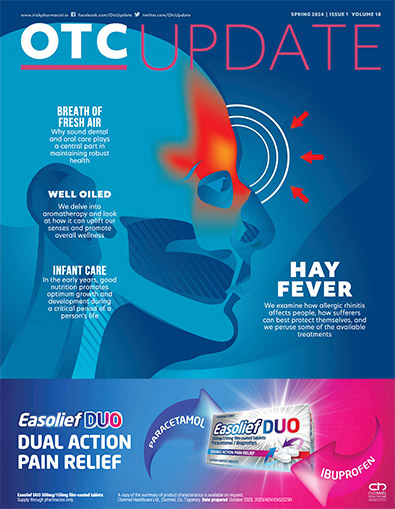An Overview Of The Past And Present Of Contraception In Ireland, Including Clinical Considerations.
HISTORY OF CONTRACEPTION IN IRELAND
Contraception was made illegal in Ireland in 1935, and not legalised again until 1978.1 This was when the Family Planning Act was introduced, permitting contraception use for family planning purposes, commonly interpreted to mean that contraceptives should only be made available to married couples. However, the oral contraceptive pill (OCP) was available on prescription in Ireland from 1963 as a ‘cycle regulator’, allowing women to get around this ban on contraception somewhat by requesting the pill for this, although it was still frowned upon.
Knowledge of GPs willing to prescribe spread by word of mouth. Numerous GPs in the highly Catholic-influenced State did not believe that contraception should be a part of their practice at all, or if they did provide it, did not do so to single women. Current clinical attitudes (in Ireland at least) have changed substantially since the 1970s: A recent report on the Eighth Amendment of the Constitution (which recognises the equal right to life of the pregnant woman and the unborn, made in 1983) made recommendations in 2017,2 which included that “improved access to reproductive healthcare services should be available to all women — to include family planning services, contraception, perinatal hospice care and termination of pregnancy if required”.
A 2013 study examining recent trends in contraceptive use in Ireland found that of all contraceptives dispensed, OCPs were most frequently used
A publication from the Working Group on Access to Contraception (Department of Health) on improving access to contraceptives suggested a targeted eligibility scheme for contraceptive services, ie, providing free contraception for 17-to-24 year-olds. At the end of 2021, Minister for Health Stephen Donnelly announced that the Government plans to provide free contraception to women aged 17-to-25 starting from August 2022.3
CONTRACEPTION EFFICACY AND MECHANISM OF ACTION
The main contraceptive effect of hormonal contraceptives is suppression of ovulation by inhibition of gonadotropin-releasing hormone (GnRH) from the hypothalamus, as well as inhibition of both luteinising hormone (LH) and follicle-stimulating hormone (FSH), and disruption of the mid-cycle LH surge.4 Although these effects are mediated by both combined oral contraceptive (COC) hormones, it is likely that the suppression effect of progestin on FSH, which prevents the maturation of the ovarian follicle, is the most important mechanism.4,5 Additional progestin-related mechanisms that contribute to the contraceptive effect include making the endometrium less suitable for implantation (thin and atrophic), thickening of cervical mucus, and impairment of normal tubal motility and peristalsis. The oestrogen component gives the advantage of stabilising sufficient endometrium production to maintain a regular withdrawal bleeding pattern and cycle control.
A 2013 study7 examining recent trends in contraceptive use in Ireland found that of all contraceptives dispensed, OCPs were most frequently used (74 per cent) and long-acting reversible contraceptives (LARCs) the least (7.5 per cent). Despite the clear superiority in efficacy of LARC methods over OCPs, the most frequently prescribed method for women aged less than 35 years was OCPs, and the progestin only pill for women ?35 years.
There is a low, but increasing, uptake of LARCs: 2.5 per cent to 6.0 per cent from 1998 to 2002, respectively. The majority (67.2 per cent) of LARC users are ?35 years of age.
While clinical advice may favour offering LARC in preference to the OCP, shared decision-making between the prescriber and the patient will improve adherence to any contraceptive method.4
COMMON INTERACTIONS WITH CONTRACEPTIVES
The same 2013 study cited above7 also looked at co-prescribing of contraceptives with interacting medication. Overall, a low co-prescribing rate with potentially interacting drugs was observed (2.4 per cent). From most- to least-frequently co-prescribed, interacting drug categories were:
- Those whose effects may be potentiated by hormonal contraception, ie, prednisolone and benzodiazepines.
- Enzyme inhibitors (statins, fluconazole, valproate) which may potentiate oestrogenic effect and venous thromboembolism (VTE) risk.
- Lamotrigine.
- Enzyme-inducing antiepileptic drugs.
Complex pharmacokinetic interactions involving antiepileptic medications and hormonal contraceptives have been established. Achieving both effective contraception and optimal seizure control in women of childbearing age is challenging: Lamotrigine, for example, is an enzyme-inducer that may reduce contraceptive effects, but on the other hand its metabolism can be compromised by OCPs. Other enzyme-inducing antiepileptic medications have the potential to make OCPs and implants/patches containing <50mcg of oestrogen ineffective.
COMBINED ORAL CONTRACEPTIVES
This is the most popular form of contraception in Ireland. COCs are available over the counter in the majority of countries worldwide, but by prescription only in 30 per cent of countries, including in Ireland.4 COCs offer reliable contraception, and also some additional benefits. Low-dose COCs (formulations containing <50mcg ethinyl estradiol) are a safe and reliable contraceptive option for healthy, non-smoking women until the age of menopause. COCs have many advantages, including:
- Rapid reversibility (for many women, after stopping, it takes 30 days for their period to return, and this occurs in almost all women within 90 days).
- Regulation of menstrual bleeding.
- Decreased menstrual blood loss.
- Dysmenorrhea.
- Reductions in the risk of ovarian and endometrial cancers.
COCs are also used widely to treat a variety of gynecologic disorders, including menstrual cycle disorders, pelvic pain disorders, ovarian cysts, and hyperandrogenism (acne and hirsutism). Hormonal contraception can be continued until the age of menopause (average age 50-to-51 years) in healthy, non-smoking, normal-weight women.
REGIMENS
Since the original OCP was first introduced in 1960, most birth control pill formulations have had 21 days of active pills, followed by seven days of placebo pills or none at all.4 The aim of these regimens is to induce withdrawal bleeding every 28 days, which historically has served to mimic a monthly menstrual cycle, and reassure the woman taking the OCP that she is not pregnant.5
There is emerging evidence that regimens with a four-day hormone-free interval (HFI) compared to a seven-day HFI, and extended 84-day regimens with a seven-day HFI, may lead to both increased efficacy (due to better suppression of ovarian follicular activity) and reduced hormone withdrawal side-effects during this time (ie, withdrawal bleeding, menstrual migraines). There is no need for periodic HFIs, in fact: Women can use COCs for years and stop only for pregnancy and/or menopause.4 Some extended-regimen COCs may provide a greater cumulative oestrogen dose compared with similarly-dosed cyclical regimens. This has led to concern over an increase in adverse effects; however, accumulating data does not seem to indicate that this is the case.5
DOSE
Women should generally be prescribed a COC with 35mcg of ethinyl estradiol or less: COCs containing 50mcg of ethinyl estradiol should generally not be used for contraception, but more so for uterine bleeding. Lower-dose COCs containing 20mcg are more likely to result in bleeding disturbances, including amenorrhea and irregular, frequent bleeding, or spotting compared to higher doses. The contraceptive vaginal rings release 13-to- 15mcg ethinyl estradiol per day.4
Initial COCs contained (by today’s standards) a huge dose of ethinyl estradiol, equivalent to 150mcg. Common side-effects such as nausea and vomiting, as well as high risk of VTE, led to their discontinuation.
| METHOD | TYPICAL USE (%) | PERFECT USE (%) |
| Natural family planning | 76 | 99 |
| Female condom | 79 | 95 |
| Diaphragms and caps (with spermicide) | 71-88 | 92-96 |
| Male condom | 82 | 98 |
| Contraceptive patch | 91 | 99 |
| Vaginal ring | 91 | 99 |
| Combined oral contraceptive pill | 91 | 99 |
| Progestin only pill | 91 | 99 |
| Contraceptive injection | 94 | 99 |
| Contraceptive implant | 99 | 99 |
| Intrauterine system (progesterone based, or copper coil) | 99 | 99 |
| Female sterilisation | 99.5 | 99.5 |
| Vasectomy | 99.9 | 99.9 |
VTE
COC use has been associated with an increased risk of VTE, which varies with oestrogen dose and certain patient factors like age, obesity, and smoking status. The increased risk of VTE is generally related to oestrogen’s stimulation of liver proteins involved in the clotting system.
The progestin component may modulate this effect significantly: Concerns have been raised about possible increased risk of deep venous thrombosis with the third-generation progestins (ie, desogestrel) and anti-androgenic progestins (ie, the fourth-generation drug drospirenone and the anti-androgen/ progestin cyproterone acetate) when compared with COCs containing the older second-generation progestin levonorgestrel.4 In general, the absolute increase in risk is still considered low for most women, and does not usually outweigh the numerous benefits of this contraceptive method, particularly when compared with the VTE risk during pregnancy and the postpartum period.
The risks of VTE during pregnancy and the postpartum period are increased approximately five- and 60- fold, respectively. The risk of VTE in women taking first-, second- and third-generation OCPs are 3.5-fold, 3 fold and 4.3 fold, respectively.8 Obese women are at greater risk for VTE with COC use and weight changes can be monitored.
COC is not recommended for the following women:4
- Age ?35 years and smoking ?15 cigarettes per day.
- Multiple risk factors for arterial cardiovascular disease (such as older age, smoking, diabetes, hypertension).
- Hypertension (systolic ?160mmHg or diastolic ?100mmHg).
- Venous thromboembolism (unless on anticoagulation).
- Known ischemic heart disease.
- History of stroke.
- Complicated valvular heart disease (pulmonary hypertension, risk for atrial fibrillation, history of subacute bacterial endocarditis).
- Current breast cancer.
- Severe (decompensated) cirrhosis.
- Hepatocellular adenoma or malignant hepatoma.
- Migraine with aura.
- Diabetes mellitus of >20 years’ duration or with nephropathy, retinopathy, or neuropathy.
Postpartum women should not use combined hormonal contraceptives for at least the first 21 days after delivery because of the increased risk for VTE during this time period. Breastfeeding women should avoid combined hormonal contraceptives until 30 days postpartum due to theoretical effects on lactation.
STARTING COC
Follicular development and breakthrough ovulation are more common in women who delay starting the pill, compared with women who start on day one of menstruation. The advantage of starting the COC on the first day of menstruation is that it provides the maximum contraceptive effect in the first cycle, and back-up contraception for the first seven days of use is not needed as it is when started later (after day five) in the cycle.9
Donna Cosgrove graduated with a BSc in Pharmacy from the Royal College of Surgeons in Ireland. She then returned to university to complete a MSc in Neuropharmacology, which led to a PhD and further research investigating the genetics of schizophrenia. Over the years Donna has worked in hospital, research and community pharmacy settings, but currently works as a community pharmacist in Galway and as a clinical writer.
References
1. Kelly L (2020). The contraceptive pill in Ireland c. 1964–79: Activism, women and patient–doctor relationships. Medical History, 64(2), 195-218.
2. Department of Health Ireland (2019). Report of the Working Group on Access to Contraception. Available https://assets.gov.ie/38063/89059243 e750415ebf7e96247a4225ae.pdf.
3. Department of Health (2022, June 28). Minister Donnelly announces government approval to publish the Health (Exemptions from Charges for Acute In-Patient Services) Bill 2022. (Press release) https://www.gov.ie/ en/press-release/3256e-minister-donnelly-announces-government-approval-to-publish-the-health-exemptions-from-charges-for-acute-in-patient-services-bill-2022/.
4. Allen RH (2022). Combined oestrogen-progestin oral contraceptives: Patient selection, counselling, and use (CA Schreiber, WF Crowley Jr, & K Eckler Eds). Available https://www.uptodate.com/contents/ combined-estrogen-progestin-oral-contraceptives-patient-selection-counseling-and-use#H4171659430.
5. Nappi RE, Kaunitz AM, & Bitzer J (2016). Extended regimen combined oral contraception: A review of evolving concepts and acceptance by women and clinicians. The European Journal of Contraception & Reproductive Health Care, 21(2), 106-115.
6.National Health Service (2020). How effective is contraception at preventing pregnancy?
Available https://www.nhs.uk/ conditions/contraception/how-effective-contraception/.
7. O’Mahony L, Liddy AM, Barry M, & Bennett K (2015). Hormonal contraceptive use in Ireland: Trends and co-prescribing practices. British Journal of Clinical Pharmacology, 80(6), 1315-1323. Available https:// www.ncbi.nlm.nih.gov/pmc/articles/ PMC4693486/.
8. Baratloo A, Safari S, Rouhipour A, Hashemi B, Rahmati F, Motamedi M, … & Haroutunian P (2014). The risk of venous thromboembolism with different generation of oral contraceptives: A systematic review and meta-analysis. Emergency, 2(1), 1.
9. National Health Service (2020). Your contraception guide: Combined pill. Available https://www.nhs.uk/ conditions/contraception/combined-contraceptive-pill/.







